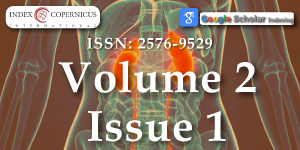Equine Anti-Thymocyte Globulin (ATGAM) administration in patient with previous rabbit Anti-Thymocyte Globulin (Thymoglobulin) induced serum sickness: A case report
Main Article Content
Abstract
Thymoglobulin is a rabbit-derived anti-thymocyte antibody directed at T-cells and commonly used for induction immunosuppression therapy in solid organ transplantation, especially in immunologically high risk kidney transplant recipients. Despite its frequent use and efficacy, the heterologous makeup of thymoglobulin can induce the immune system resulting in serum sickness which typically presents with rash, fever, fatigue, and poly-arthralgia in the weeks following drug exposure. ATGAM is another anti-thymocyte antibody, targeting the same epitopes, but differs from thymoglobulin by the animal in which the preparations are generated (equine vs. rabbit). Herein, we present a case of a patient with a known history of thymoglobulin-induced serum sickness, who presented with evidence of acute cellular and vascular rejection at their 12-month post-operative visit. Given their immunologically high risk status, they were successfully treated with ATGAM with improvement in their rejection and kidney function. To the author’s knowledge, this is the first case report of successful administration of ATGAM in a patient with a documented history of thymoglobulin induced serum sickness, demonstrating a possible treatment option for acute rejection in patients with reactions to thymoglobulin.
Article Details
Copyright (c) 2018 Pryor JB. et al.

This work is licensed under a Creative Commons Attribution 4.0 International License.
Koyawala N, Silber JH, Rosenbaum PR, Wang W, Hill AS, et al. Comparing Outcomes between Antibody Induction Therapies in Kidney Transplantation. J Am Soc Nephrol. 2017; 28: 2188-2200. Ref.: https://goo.gl/WQYfYJ
Halloran PF. Immunosuppressive Drugs for Kidney Transplantation. N Engl J Med. 2004; 351: 2715-2729. Ref.: https://goo.gl/uo57dt
Tanriover B, Chuang P, Fishbach B, Helderman JH, Kizilisik T, et al. Polyclonal antibody-induced serum sickness in renal transplant recipients: treatment with therapeutic plasma exchange. Transplantation. 2005; 80: 279-281. Ref.: https://goo.gl/qL5FB4
Hardinger KL, Rhee S, Buchanan P, Koch M, Miller B, et al. A prospective, randomized, double-blinded comparison of thymoglobulin versus atgam for induction immunosuppressive therapy: 10 year results. Transplantation. 2008; 86: 947-952. Ref.: https://goo.gl/43csFd
James A, Mannon RB. The Cost of Transplant Immunosuppressant Therapy: Is This Sustainable? Current transplantation reports. 2015; 2: 113-121. Ref.: https://goo.gl/AjES7W
Schnitzler MA, Woodward RS, Lowell JA, Amir L, Schroeder TJ, et al. Economics of the antithymocyte globulins Thymoglobulin and Atgam in the treatment of acute renal transplant rejection. PharmacoEconomics. 2000; 17: 287-293. Ref.: https://goo.gl/wHrd7K
Szczech LA, Berlin JA, Feldman HI. The effect of antilymphocyte induction therapy on renal allograft survival. A meta-analysis of individual patient-level data. Anti-Lymphocyte Antibody Induction Therapy Study Group. Ann Intern Med. 1998; 128: 817-826. Ref.: https://goo.gl/nWUZ5f
Vardhan H, Prasad N, Jaiswal A, Yadav B, Kumar S, et al. Outcomes of living donor renal transplant recipients with and without basiliximab induction: A long-term follow-up study. Indian Journal of Transplantation. 2014; 8: 44-50.
Hardinger KL, Brennan DC, Klein CL. Selection of induction therapy in kidney transplantation. Transpl Int. 2013; 26: 662-672. Ref.: https://goo.gl/FiJq3U
Cai J, Terasaki PI. Induction immunosuppression improves long-term graft and patient outcome in organ transplantation: an analysis of United Network for Organ Sharing registry data. Transplantation. 2010; 90: 1511-1515. Ref.: https://goo.gl/ZGWfd8
Lawley TJ, Bielory L, Gascon P, Yancey KB, Young NS, et al. A prospective clinical and immunologic analysis of patients with serum sickness. N Engl J Med. 1984; 311: 1407-1413. Ref.: https://goo.gl/pfMx1z
Pham PT, Pham PM, Miller JM, Pham PC. Polyclonal antibody-induced serum sickness presenting as rapidly progressive descending paralysis. Transplantation. 2007; 83: 1657. Ref.: https://goo.gl/gau9vh
Lundquist AL, Chari RS, Wood JH, Miller GG, Schaefer HM, et al. Serum sickness following rabbit antithymocyte-globulin induction in a liver transplant recipient: case report and literature review. Liver Transpl. 2007; 13: 647-650. Ref.: https://goo.gl/jfrTKk
Bielory L, Gascon P, Lawley TJ, Young NS, Frank MM. Human serum sickness: a prospective analysis of 35 patients treated with equine anti-thymocyte globulin for bone marrow failure. Medicine (Baltimore). 1988; 67: 40-57. Ref.: https://goo.gl/EbnaJH
Regan JF, Campbell K, Van Smith L, Schroeder TJ, Womble D, et al. Sensitization following Thymoglobulin and Atgam rejection therapy as determined with a rapid enzyme-linked immunosorbent assay. Transplant Immunology. 1999; 7: 115-121. Ref.: https://goo.gl/eZPrvN

